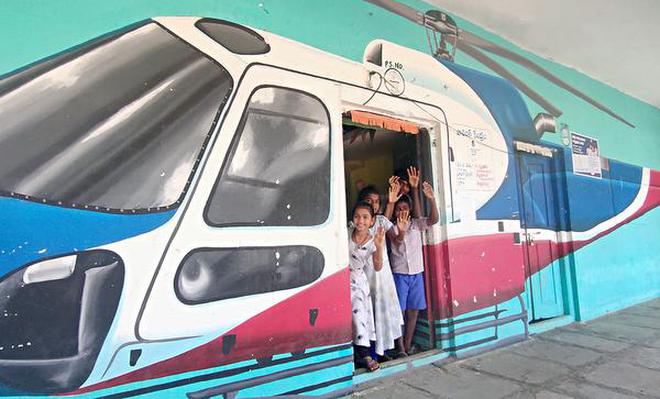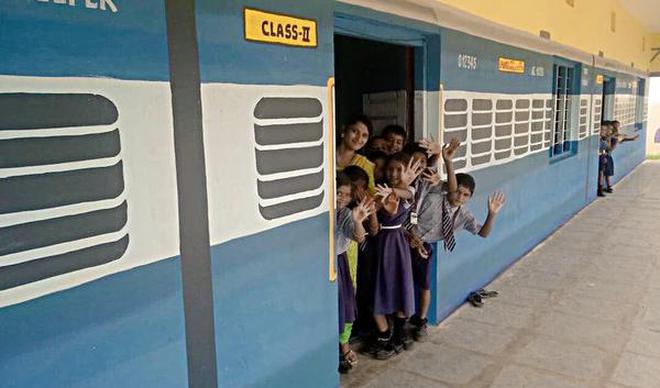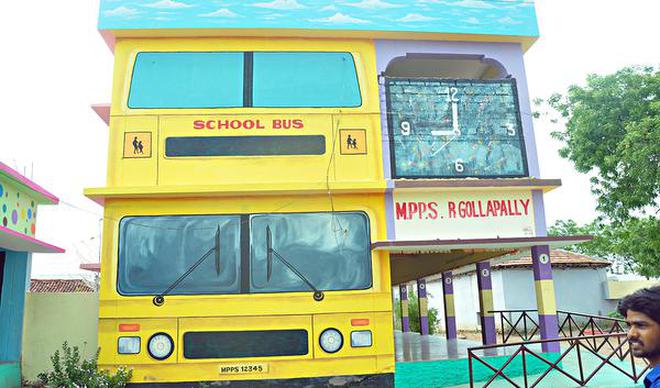The very mention of government schools projects the images of dilapidated buildings, shaky structures, untidy classrooms and disinterested children from poor families trying to cope up with shortage of teachers, besides a poor learning environment.
Fact or falsehood but these are the images that strike everyone. More so, after mushrooming private schools started attracting children even from modest families whose major share of income is spent on the education, compromising on small pleasures of life.
Before the economic liberalisation engulfed the country, these very neglected government schools produced the best talent despite the modest facilities. Committed teachers and hardworking students overcame several barriers and the advantage of their peers from the convent educated from upper-middle and higher-income groups. But such talented students from government schools dwindled over the years.

The swelling coffers of the government and rising aspirations of people however worked against the government education sector, instead of strengthening it. As education became an investment for a prosperous future by the families and businessmen replacing the service-oriented trusts in the private sector, English medium was made inevitable. And it flourished as a business while the government schools slowly were put on their deathbed. Of course, rapid changes in technology and the world becoming a small village in terms of employment opportunities had their share in the emerging scenario.
Massive move
As they say, one idea can change a life, the Telangana government’s move to offer English medium education in all the government schools from Class I to VIII, starting from this academic year, gave new hope to the poor and lower middle-class children.
The Cabinet Sub-committee headed by Education Minister P. Sabitha Indra Reddy recommended English medium education and the Cabinet in its meeting on January 18 decided to adopt the recommendation.
The other major policy decision to refurbish the government schools by providing the best facilities will have a major impact on the future of government schools. The combination of English medium and new look schools, the government hopes, will bring back the undisputed glory once enjoyed by the government schools.
Chief Minister K. Chandrashekhar Rao’s dream project ‘Mana Ooru Mana Badi”, though many say is inspired by the Y.S. Jaganmohan Reddy’s “Naade Nedu ‘‘ scheme in Andhra Pradesh, is likely to change the look of 26,065 government schools during the next three years with an expenditure of ₹7,289 crore.

These English medium schools will have facilities like furniture, better trained teachers, clean washing rooms, drinking water and refurbished buildings – all that is needed for a classic education environment to enhance learning capabilities. Out of these 26,065 schools, 18,240 are primary, 3,164 upper primary and 4,661 are high schools.
It is actually reflected in the spiralling admissions in government schools this year. As of June 26, the schools recorded fresh admissions of 1,60,755 children, mostly from private schools and the government’s aggressive enrolment through Professor Jayashankar Badibata programme seems to be paying dividends.
Officials claim that such a surge towards government schools was also seen last year when around 1.25 lakh students from private schools shifted to the government schools in the 2021-22 academic year, which is about a 40% jump compared to the previous academic year. This was mainly due to the job losses and falling incomes during the pandemic when parents found it extremely difficult to pay school fee.
‘Attractive’ English medium
One of the prime reasons for such massive support from parents is definitely English medium education, and that too - free of cost. “No doubt, parents want English medium education, and when it is offered free of cost, they are bound to get attracted,” agrees Chava Ravi, secretary of United Teachers Federation (UTF), one of the largest teacher unions in Telangana. Closure of low-budget private schools due to the pandemic and the unaffordable fee structure there is forcing parents to opt for government schools, this is more visible in the city areas.
It’s not that this is the first time English medium education is made available in the government sector. The Model Schools concept was started by the Congress government when Y.S. Rajasekhara Reddy was the Chief Minister and was a huge hit as well. However, the schools were limited, opening the opportunity to only a few thousands of students.
Engligh medium challenges
But challenges are plenty and majorly in the form of English medium teachers. There is a severe shortage of teachers with an English medium background. Officials, unofficially claim that not more than 40% of teachers have the ability to adopt English medium teaching. Even among them, not more than 10% can actually do the job with confidence.
As Prof. Venkat Reddy of English and Foreign Languages University (EFLU) puts it, there is a special way of training teachers to teach English. This is a must if students are to be taught well right from childhood. “Moreover, children fear learning English, given the grammar structure which is totally different from their native Telugu language. Traditionally, students are forced to learn grammar and not language skills and that has only complicated the learning process,” Prof. Reddy argues. Fundamental change is needed in that.
Teachers apart, the switch won’t be easier for students either, especially for secondary school students, argues a government teacher. A slow transition is the better way to go ahead rather than imposing it on the secondary and higher secondary students.
The government on its part made some effort, or at least prepared the teachers to embrace the emerging challenge. Education Minister Sabita Indra Reddy pointed out that about one lakh teachers were imparted English medium education training with the assistance of Azim Premji University.

The government has also come up with a unique concept of multi-linguistic books with the opposite pages of the textbooks printed in English and Telugu so that students can understand the topics easily and quickly check in both the languages.
Shortage of teachers is another huge hurdle though the government has announced filling up the teacher vacancies for the first time after the formation of Telangana. As many as 21,000 teacher posts are vacant across Telangana in government schools, according to Mr. Chava Ravi. As per the Right to Education Act (RTE), the teacher-student ratio should be 1:30 but that doesn’t exist in Telangana, he says.
Many teachers feel a proper action plan should have been put in place to introduce English medium gradually. “No one tested the readiness of the government school teachers in teaching English,” a government school teacher said, wishing anonymity.
But as a Chinese proverb says, the thousand-mile walk starts with a single step. And the government has taken the first bold step in offering English medium education. There are several hurdles ahead, and of course many milestones as well.







